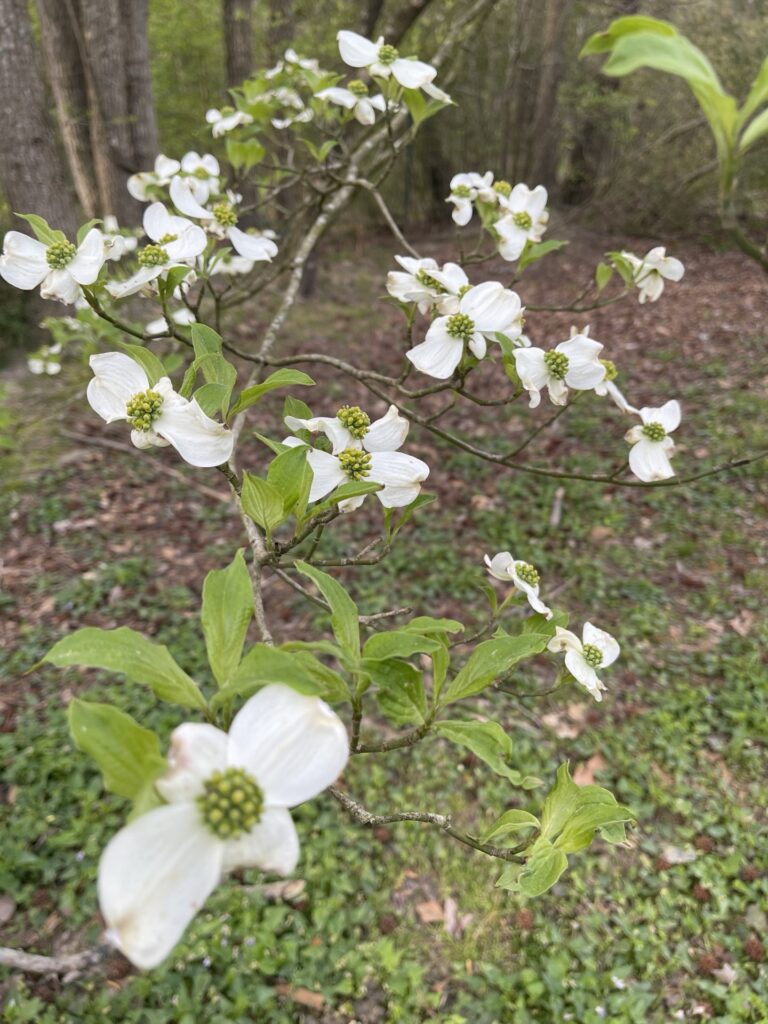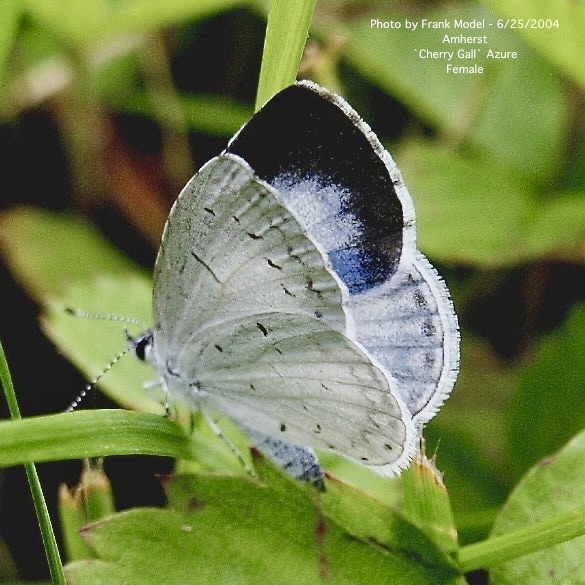
Cornus florida: The Genus name comes from the Latin word cornus meaning “horn”, possibly referring to the strength and density of the wood. Cornus is also the Latin name for cornelian cherry (Cornus mas). Cornus may also be related to the Greek kerasos meaning “cherry.” The specific epithet comes from the Latin word flos flower, which points to its attractive spring flowers. The common name of dogwood is thought to refer to an old-time use of hard slender stems from this tree for making skewers once known as dags or dogs.
Common Names: Flowering Dogwood, Virginia Dogwood
Family: Cornaceae
If March’s plant of the month, Hellebores, is the harbinger of spring, April’s plant of the month, the Flowering Dogwood, declares Spring has arrived. Few trees are as beautiful as the Flowering Dogwood, which blooms in the Virginia woods in late March and April.
Cornus florida is often considered one of the most spectacular native, flowering trees. Flowering dogwood is a deciduous tree, that grows 20-40 ft tall. It grows as a single or multi-trunked tree, with a graceful crown composed of horizontal-tiered spreading branches. These branches boast long-lasting showy, white or pink spring blooms, which develop into red fruits (drupes). In the Fall, the foliage of the Dogwood becomes a stunning scarlet-red. Flowering Dogwood is one of the most beautiful eastern North American trees.
The Flowering Dogwood is considered a hardwood, which is extremely shock-resistant and useful for making weaving shuttles. It is also made into spools, small pulleys, mallet heads, and jeweler’s blocks. The Native Americans used the aromatic bark and roots as a remedy for malaria and extracted a red dye from the roots.
When stressed the Flowering Dogwood, is susceptible to a rather large number of disease problems, the most serious of which is dogwood anthracnose. The Dogwood is vulnerable to powdery mildew, leaf spot, canker, root rot, and leaf and twig blight. Stressed trees also become vulnerable to borers. The leaf miner and scale bugs are less serious potential insect pests.
Propagation can be done by seed. Sow seeds outdoors immediately after collection or cold stratify and sow the following spring. Seed Treatment: Stratify for 30-60 days at 41 degrees.
Flowering Dogwood is the host plant for the Spring Azure larvae and the drupes provide food for birds and small wildlife. The Xerces Society considers the Flowering Dogwood an extremely beneficial tree for native bees and pollinators.
References:
Lady Bird Johnson Center for Wildflowers
https://www.wildflower.org/plants/result.php?id_plant=cofl2
Missouri Botanical Garden
https://www.missouribotanicalgarden.org/PlantFinder/PlantFinderDetails.aspx?kempercode=c280
Butterfly – Spring Azure

